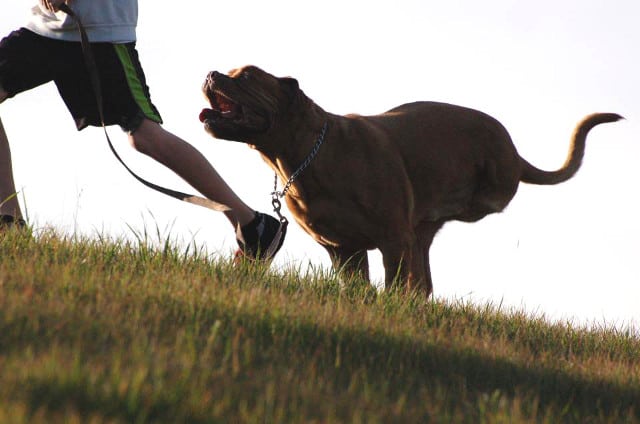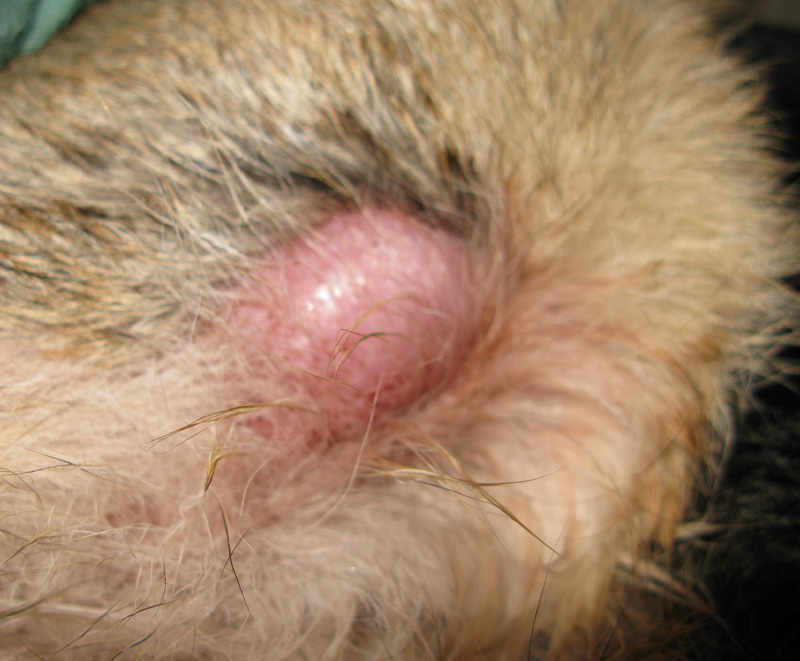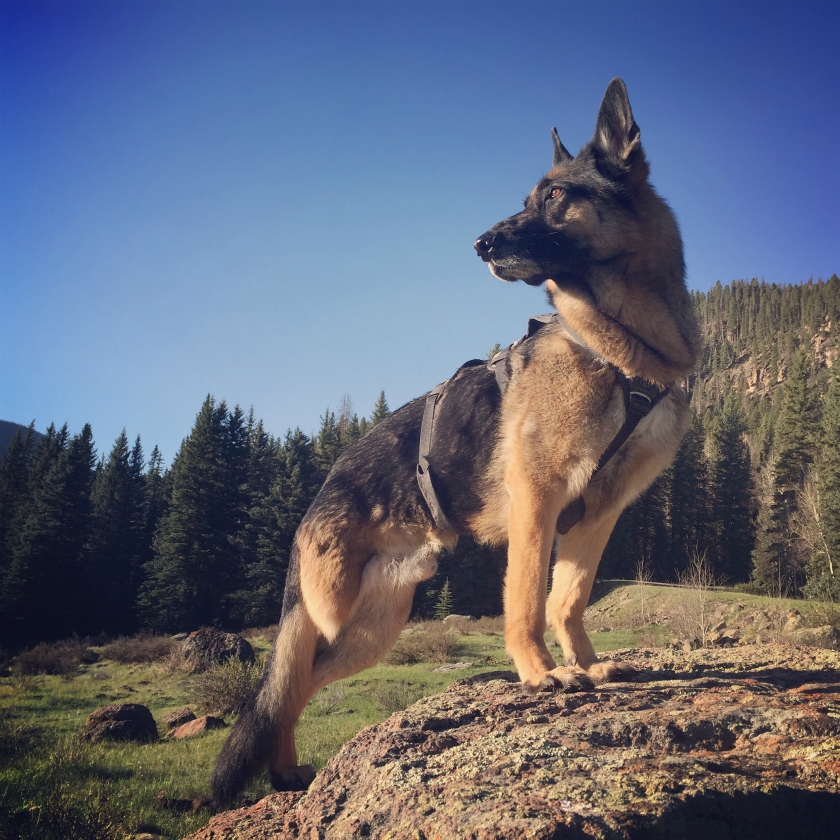Tripawds Three Legged Dog & Cat Forum Archives
Tripawds is your home to learn how to care for a three legged dog or cat. Explore 17+ years of forum archives for stories and answers to questions about dog leg amputation, and cat amputation recovery. Enjoy fresh discussion and connect with members in the new Tripawds Support Circle.
Join The Tripawds Community
Register your free account to join the Tripawds Support Circle. Connecting with members and getting the support you need is now easier than ever with the Circle app!
✅ Easy Photo Upload
✅ Direct Messaging
✅ Subscribe to Topics.
✅ Live Chat and much more!
Forums Locked: Search archives for answers & join Tripawds Support Circle to keep discussion going!
FOR BEST RESULTS: USE ADVANCED SEARCH

 Read the original blog post
Read the original blog post

3:33 am
Team Tripawds
Administrators
Helpline Hosts
25 April 2007
 Offline
OfflineWhy do hind limb amputee dogs and cats get either a full or partial leg amputation? How to vets decide how much leg to amputate? Let's look at the latest thinking about the surgery for rear leg Tripawds.
Veterinary Surgeons Rethink Full or Partial Leg Amputation for Dogs and Cats
Veterinary orthopedic surgery is an evolving science. For example, amputation pain management is far better than it was just 10 years ago. And this year, a new paper about the best type of hind leg amputation for dogs and cats is also changing how vets do this surgery.
A 2022 issue of Clinician’s Brief features a peer-reviewed paper about Canine Pelvic Limb Amputation. Written by four Ohio State University veterinary surgeons, it contains important information for veterinarians and pet parents alike. If your dog or cat is about to join our community, consider downloading this paper and reviewing the findings with your surgeon.
A Look at the Best Type of Hind Leg Amputation Techniques with Vet Surgeon Dr. Stephen Jones


Since we are not veterinarians, we reached out to one of the authors of this paper, Dr. Stephen Jones, MVB, MS, DACVS-SA, DECVS (Diplomate, American College of Veterinary Surgery - Small Animal and Diplomate of the European College of Veterinary Surgery).
When this paper was written, Dr. Jones was an assistant professor of small animal orthopedics at The Ohio State University. Today, he’s leader of the orthopedic pack at Bark City Veterinary Specialists in Park City, Utah. His special clinical interests include the management of cranial cruciate ligament rupture, arthroscopy, minimally invasive fracture repair, medical and surgical treatment of joint disease, and surgical management of angular limb deformities.
Dr. Jones kindly responded to our request to help us interpret the paper, so that pet parents like us can have a good conversation the best type of hind leg amputation for dogs and cats like ours. Here’s what he said about two of the findings in the paper that caught our eye:
Finding 1: A Full Rear Leg Amputation on Dogs and Cats is Best


We asked Dr. Jones to discuss the point that states: "The midfemoral amputation technique protects male genitalia with favorable cosmesis but can cause a greater likelihood of muscle atrophy and pressure sores."
Since so many Tripawds have mid-femoral amputations, we wondered about his experience with dogs and cats who underwent this type of amputation. Here’s what Dr. Jones said about it:
“There are no studies on this specifically, that I am aware of. I have seen any dogs with mid-femoral amputations that do very well, clinically. However, I have also seen many dogs with this form of amputation where the dog continues to try to use the stump as a prop etc where it has lead to the development of pressure sores and the necessity for more surgery.
The Problem with Midfemoral Amputations on Dogs


Over time the muscle covering the femoral stump atrophies, as it is not being used. In some of these dogs, the stump can get damaged and it develops pressure sores. This can be very problematic because it is an extremely difficult area to appropriately bandage, when a sore does develop.
Furthermore, when a stump-sore develops, it is prone to getting infected due to the fact that the wound comes into direct contact with the ground. As you might imagine, treating infections with a femoral stump can be very challenging.”
Yes, a Partial Leg Amputation Can Have Challenges Over Time
We found this to be true in managing our Wyatt Ray ’s amputation stump. He even had surgery on it once, to troubleshoot a scary lump that appeared. A few thousand dollars later, we discovered that bone wax used in his amputation to stop bleeding on the severed limb was working its way out!
Wyatt also had a scary pressure sore that we aspirated a few times in his life. It wasn’t cancer, just ongoing fluid build-up from banging his stump on the ground.


Finding #2: A Full Hind-Limb Amputation (Coxofemoral Disarticulation Amputation) is Predictable and Easy to Manage
Dr. Jones’ and his colleagues go on to say that a full hind limb amputation is best for many reasons. "Amputation by coxofemoral joint disarticulation, however, obviates the risk for delayed muscle atrophy and has favorable cosmesis,” they write. “This procedure provides a predictable outcome and reduces the likelihood of pressure sore development, thereby improving postoperative recovery and at-home incision management as compared with the midfemoral technique."
Dr. Jones explains:
While a full hind-limb amputation (disarticulation at the hip joint) is technically harder to perform, problems with the stump are never something that needs to be dealt with when amputation is performed in this manner.
Additionally, in many instances the hind-limb amputation is being performed because of some form of cancer. Performing a full hind-limb amputation allows the removal of more tissue, increasing the chances that all of the cancerous cells in that limb are removed.
In my opinion, all of the advantages of performing a full hind-limb amputation (technically called a “coxofemoral disarticulation amputation”) greatly outweigh the potential benefits (such as protection of male genitalia in intact male dogs, and allowing some use of the stump) of a mid-shaft amputation.
What About Caring for a Full Leg Amputation Incision?

Is the incision for a full-leg amputation in a dog or cat harder to manage than a partial leg amputation incision? Dr. Jones says it is not, and kindly shared his perspective:
“The incisional care is essentially the exact same. Most of the time, our pets will not want to lie on that side for a few weeks, until the incision has fully healed. However, if the dog or cat did lie on that site in the early post-operative period, I’d be more concerned with a midfemoral given that the femoral stump may put pressure on the incision and this can cause problems. Luckily however, that is not typically an issue.”
We hope you found this information helpful. Share it with your vet, and ask Dr. Jones for another opinion if you'd like. Then create a plan to help your own Tripawds live their best life on three.
And stay tuned for next week, when we discuss changes in post-op care recommendations for amputation surgery.


 Log In
Log In Members
Members








